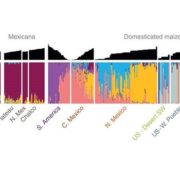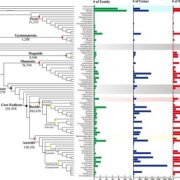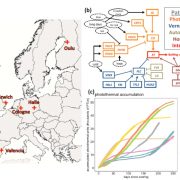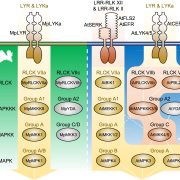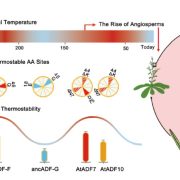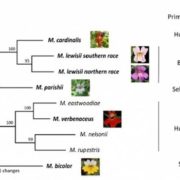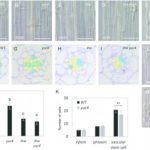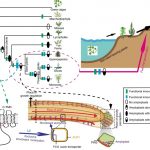Divergent gene expression networks underlie morphological diversity of abscission zones in grasses ($)
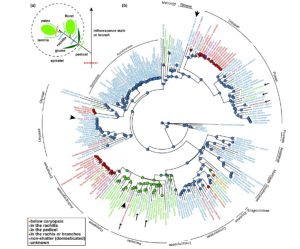 Grasses scatter their seeds through the process of cell abscission. Losing this trait, in a process known as loss of shattering, was an early step in the domestication of cereals. Interestingly, the abscission zone (AZ) is positionally and morphologically different in different cereals. In order to understand the diversification of this trait, Yu et al. set out to identify the phylogenetic distribution of AZ position, anatomy and underlying gene networks in grasses by comparing three species, a shattering weedy rice (Oryza sativa) Brachypodium distachyon, and Setaria viridis. They show that the ancestral AZ position is found in rice and Brachypodium, whereas Setaria shows the derived position. They also found that the set of genes expressed in the AZs differs independently from its position. They conclude, “the set of AZ genes is a species-specific subset of a generally conserved set of expressed genes, suggesting conservation of the overall developmental program through time but distinct spatial control.” (Summary by Mary Williams) New Phytol. 10.1111/nph.16087
Grasses scatter their seeds through the process of cell abscission. Losing this trait, in a process known as loss of shattering, was an early step in the domestication of cereals. Interestingly, the abscission zone (AZ) is positionally and morphologically different in different cereals. In order to understand the diversification of this trait, Yu et al. set out to identify the phylogenetic distribution of AZ position, anatomy and underlying gene networks in grasses by comparing three species, a shattering weedy rice (Oryza sativa) Brachypodium distachyon, and Setaria viridis. They show that the ancestral AZ position is found in rice and Brachypodium, whereas Setaria shows the derived position. They also found that the set of genes expressed in the AZs differs independently from its position. They conclude, “the set of AZ genes is a species-specific subset of a generally conserved set of expressed genes, suggesting conservation of the overall developmental program through time but distinct spatial control.” (Summary by Mary Williams) New Phytol. 10.1111/nph.16087


